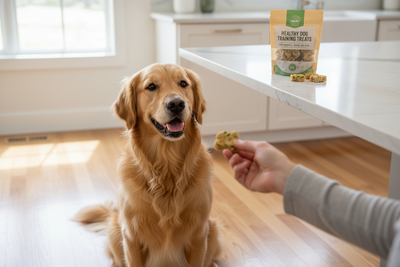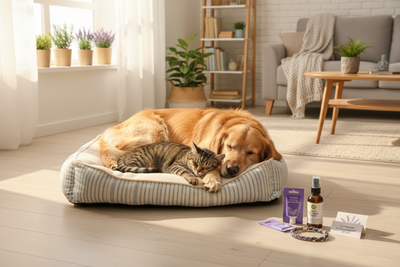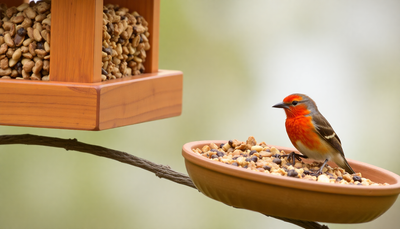Introduction

Importance of choosing the perfect ant cage
Ant enthusiasts know that selecting the perfect ant cage plays a crucial role in maintaining a thriving ant colony. A well-chosen cage ensures the ants' health, safety, and wellbeing while providing the keeper with an enjoyable observation experience.
Factors to consider when selecting an ant cage
Several factors, including size, material, ventilation, and accessibility for cleaning, come into play when choosing the right ant cage. Other considerations such as escape-proof features, multiple chambers, visibility, and accessories also contribute to the decision-making process.
Overview of the comprehensive guide
This guide aims to provide ant enthusiasts with a thorough understanding of ant biology, necessary considerations when selecting an ant cage, available options in the market, and tips on setting up, caring for, and observing ant colonies.
Understanding Ants
Before diving into the world of ant keeping, it is essential to have a fundamental understanding of ants' basic characteristics, the different species suitable for keeping as pets, and their behavior and social structure. This knowledge will not only help in selecting the perfect ant cage but also ensure proper care and maintenance of the ants.
Basic characteristics of ants
Ants are social insects that belong to the family Formicidae and are known for their remarkable teamwork, intricate communication, and complex social organization. They have a segmented body, consisting of a head, thorax, and abdomen, as well as six legs and a pair of antennae used for sensing their environment. Ants come in various sizes and colors, with their diet and habitat preferences depending on the species.
Different ant species suitable for keeping as pets
There are numerous ant species worldwide, but not all are suitable for keeping as pets. Some popular species among ant enthusiasts include:
- Lasius niger: Also known as the black garden ant, this species is relatively easy to care for and is known for its fast colony growth.
- Camponotus spp.: Carpenter ants are large and can be found in various colors. They require a larger living space due to their size, but they are relatively low-maintenance and easy to observe.
- Formica spp.: Wood ants are known for their fascinating behavior, and while they can be more challenging to care for, they offer a rewarding experience for dedicated ant keepers.
- Myrmica rubra: The European fire ant is a small, aggressive species with a painful sting. They are not recommended for beginners but can be an exciting challenge for experienced ant keepers.
Before choosing a species, it is essential to research their specific care requirements and ensure that the chosen ant cage meets their needs.
Ant behavior and social structure
Ant colonies are highly organized, with each ant having a specific role in the colony's success. The main roles in an ant colony are the queen, workers, and, in some species, soldiers. The queen is the reproductive individual responsible for laying eggs and ensuring the colony's growth. Workers are usually sterile females who perform various tasks such as foraging, caring for the young, and maintaining the nest. Soldiers are larger ants with specialized features for defense and are found in certain ant species.
Ants communicate with each other using pheromones, which are chemical signals that convey information about food sources, danger, or the need for assistance. Understanding these aspects of ant behavior and social structure will enhance the ant keeping experience and help in designing a suitable environment for the ants in their cage.
Factors to Consider When Choosing an Ant Cage
When selecting the perfect ant cage for your colony, it's essential to consider several factors that will ensure the wellbeing and growth of your ants. This comprehensive guide will help you make an informed decision based on the size, material, ventilation, accessibility for cleaning, escape-proof features, multiple chambers, visibility, and accessories of the ant cage.
Size
Consider the appropriate dimensions for your ant colony when choosing an ant cage. A suitable size will provide enough space for the ants to move around comfortably and perform their daily activities. Additionally, ensure the ant cage offers room for growth and expansion as your colony develops over time.
Material
The material of the ant cage plays a crucial role in the durability and longevity of the cage. Opt for materials that are sturdy, easy to clean, and have minimal impact on the health and wellbeing of your ants. Common materials used for ant cages include acrylic, glass, and 3D-printed plastics.
Ventilation
A healthy ant colony requires proper airflow, which is why ventilation is an essential factor in choosing the right ant cage. Adequate ventilation helps prevent mold and excess humidity, which can be detrimental to the ants' health. Look for ant cages with ventilation systems that ensure a consistent airflow without allowing ants to escape.
Accessibility for Cleaning
Regular maintenance is necessary for keeping your ant colony healthy. Choose an ant cage that allows for easy cleaning and maintenance while ensuring a hygienic environment for the ants. Features such as removable parts and access points can make the cleaning process more manageable.
Escape-proof Features
Preventing ants from escaping is crucial for the safety of both the ants and your home environment. Look for ant cages with escape-proof features, such as secure lids, tight-fitting connections, and barriers to keep the ants contained. The importance of securing the ant cage cannot be overstated, as escaped ants can cause infestations or harm to the colony.
Multiple Chambers
An ant cage with multiple chambers helps separate the queen and worker ants, allowing for better organization of the colony. This separation is vital for the efficient functioning of the ant society and the overall health of the colony.
Visibility
One of the main reasons people keep ant colonies is for observation and enjoyment. Enhance your experience by selecting an ant cage that offers clear visibility of the ants' activities. Features such as transparent materials or built-in lighting can help improve the view of your colony.
Accessories
Providing a stimulating environment for your ants is crucial for their wellbeing. Look for ant cages that come with accessories like feeding dishes, water tubes, and tunnels for enrichment. These additional items not only enhance the living conditions for your ants but also contribute to the overall success of your colony.
Review of Popular Ant Cages Available in the Market
When it comes to selecting the perfect ant cage, it's essential to explore different options available in the market. In this section, we'll discuss Talis-us ant cage offerings and compare them with other popular options to help you make an informed decision.
Talis-us Ant Cage Offerings
Talis-us provides a range of high-quality ant cages designed to cater to the needs of ant enthusiasts. These cages come with numerous key features and benefits, making them a top choice for many hobbyists. One of the main advantages of Talis-us ant cages is their durable construction, ensuring a long-lasting environment for your ant colony. Additionally, the ant cages feature proper ventilation for airflow and humidity control, escape-proof mechanisms, and easy accessibility for maintenance and cleaning.
When compared to other ant cages in the market, Talis-us stands out due to its comprehensive approach to ant care. These cages are designed with the ants' wellbeing and the user's convenience in mind, offering a seamless experience for both the ants and the hobbyist.
Other Ant Cage Options
While Talis-us offers exceptional ant cages, it's crucial to explore other options as well to make the best choice based on your specific needs. Some other popular ant cage options come with various pros and cons.
For instance, some ant cages may be more affordable than Talis-us options but might compromise on features such as durability, ventilation, or escape-proof mechanisms. On the other hand, high-end ant cages might offer additional features, such as built-in heating systems or advanced humidity control, but come with a higher price tag.
To choose the right ant cage for your needs, consider factors such as your budget, the size of the colony, and the specific requirements of the ant species you plan to keep. By comparing Talis-us offerings with other options in the market, you'll be better equipped to select the perfect ant cage that meets your needs and preferences.
Setting Up the Ant Cage
Properly setting up the ant cage is crucial for the wellbeing of your ant colony. Follow these steps and tips to ensure a successful setup:
Component Installation
Begin by carefully installing the components of the ant cage, following the step-by-step instructions provided by the manufacturer. It's essential to set up each part correctly to create a safe and comfortable environment for the ants. Some manufacturers may also offer video resources for guidance, which can be helpful for visual learners.
Ant Nest Installation
Next, install the ant nest within the cage, ensuring it is securely and appropriately positioned. The nest should be placed in a location that allows the ants to move freely between chambers and access other areas of the cage. It's crucial to provide a proper nesting area to support the colony's growth and development.
Activity Area Installation
After setting up the ant nest, install the activity area within the cage. This area should be designed to encourage natural ant behaviors, such as foraging and exploration. Include elements like tunnels, feeding dishes, and water tubes to provide enrichment for the ants and promote a healthy, active lifestyle.
Combining All Parts
Once the ant nest and activity area are installed, combine all parts of the ant cage to create a cohesive, secure environment for the ants. Ensure that all components are properly connected and that there are no gaps or openings that could allow the ants to escape or become trapped.
"What's in the Box" Overview
Before introducing ants to their new home, review the "What's in the Box" overview provided by the manufacturer. This will help you familiarize yourself with the ant cage's features and ensure that you have properly set up and installed all necessary components. Remember that a well-prepared environment is essential for the health and happiness of your ant colony.
Choosing and Collecting Ants
When it comes to selecting the inhabitants of your ant cage, there are several factors to consider. It is essential to be aware of legal considerations and regulations, adopt safe and ethical ways to collect ants, find reputable sources for purchasing ants, and follow tips for successfully introducing them to the ant cage.
Legal Considerations and Regulations
Before collecting or purchasing ants, it is crucial to familiarize yourself with any local, state, or national laws and regulations regarding ant keeping. Some species may be protected or prohibited in certain areas due to their potential impact on native ecosystems. Make sure to research the specific ant species you are interested in and comply with any legal requirements to ensure responsible ant keeping.
Safe and Ethical Ways to Collect Ants
If you decide to collect ants from the wild, prioritize safety and ethics. Avoid disturbing natural habitats or causing harm to the ants. One recommended method is to look for ant colonies during their nuptial flights, when winged queens and males are searching for mates. After mating, the queen will land, shed her wings, and search for a suitable location to establish a new colony. This is an ideal time to collect a queen without disrupting the original colony. Remember to always practice responsible and respectful collection techniques.
Recommended Sources for Purchasing Ants
For those who prefer not to collect ants from the wild, there are reputable sources available for purchasing ant queens and colonies. Look for established ant keeping suppliers that prioritize the health and wellbeing of their ants. When purchasing ants, choose a supplier that specializes in your desired species and offers support for new ant keepers. This will ensure that you receive healthy ants and have access to expert advice on their care.
Tips for Successfully Introducing Ants to the Ant Cage
Once you have obtained your ants, it is essential to introduce them to their new environment in a way that minimizes stress and maximizes their chances of success. To do this, carefully transfer the ants to the cage and provide them with adequate food, water, and shelter. Monitor their behavior and adjust the conditions as necessary to ensure their comfort and wellbeing. Remember, patience is key when it comes to establishing a thriving ant colony. Give the ants time to acclimate and settle into their new home before expecting to see significant growth and activity.
Ant Care and Maintenance
Caring for your ants and maintaining their habitat is crucial for their well-being and longevity. In this section, we will discuss essential aspects of ant care, including feeding, providing water, controlling temperature and humidity, and cleaning the ant cage.
Feeding Ants
Ants have diverse dietary requirements, depending on the species. A balanced diet for most ants usually consists of proteins, carbohydrates, and fats. Protein sources can include insects like crickets or mealworms, while carbohydrates can come from fruits, vegetables, or honey. It's essential to research your particular ant species' dietary needs and provide a variety of food sources to ensure their health and well-being. Make sure to remove any uneaten food after 24 hours to prevent mold growth and maintain a clean environment.
Providing Water for Ants
Water is vital for ants' survival, and it's essential to provide a constant supply of fresh water for your colony. You can use water tubes or dishes with a sponge or cotton ball to prevent drowning. Regularly check the water supply and replace it when needed to ensure the ants have access to clean water. Some ant species also require a higher humidity level, so make sure to maintain the appropriate humidity in the ant cage by lightly misting the substrate or using a humidifier.
Temperature and Humidity Control
Ants are sensitive to temperature and humidity fluctuations, and maintaining a stable environment is crucial for their well-being. Research the ideal temperature and humidity levels for your particular ant species, and use heating mats or lamps to maintain the desired temperature. Monitor the temperature and humidity using a digital hygrometer and thermometer, and make adjustments as necessary to keep the environment stable. Remember to avoid placing the ant cage near heat sources, air vents, or windows to prevent sudden changes in temperature and humidity.
Cleaning and Maintaining the Ant Cage
Keeping the ant cage clean and well-maintained is essential for the health and well-being of your ant colony. Regularly remove any uneaten food and waste, and clean the feeding dishes and water tubes as needed. Occasionally, you may need to clean the ant cage more thoroughly, taking care not to disturb the ants or their nest. Use a soft brush to remove any debris or buildup, and avoid using harsh chemicals that could harm the ants. By maintaining a clean and stable environment, you can ensure the longevity and health of your ant colony.
Observation and Interaction
Observing and interacting with your ant colony can be a fascinating and rewarding experience. In this section, we will provide insightful tips for observing ant behavior and activities, discuss the importance of natural lighting, and share ways to interact with ants without causing harm. Additionally, we will explore feeding rituals and methods for recording and documenting your ant observations.
Tips for Observing Ant Behavior and Activities
When observing your ants, patience is key. Allow time for the ants to acclimate to their new environment, and avoid disturbing them too frequently. Maintain a comfortable distance from the ant cage to prevent stress on the colony. Observing the ants from different angles may also provide insights into their behavior patterns and social structure.
Natural Lighting Considerations
While natural lighting is essential for the wellbeing of your ant colony, direct sunlight can cause overheating and discomfort for the ants. Position the ant cage in a well-lit area with indirect sunlight. This will ensure optimal visibility for observation while maintaining a healthy environment for the ants.
Interacting with Ants without Causing Harm
Adopt a hands-off approach when interacting with your ant colony. Avoid touching the ants or placing objects inside the cage that may disrupt their daily activities. Instead, use a gentle feeding ritual to establish a connection with the ants. This will allow you to enjoy their presence without causing harm or stress to the colony.
Feeding Rituals
Establishing a consistent feeding ritual can help build trust between you and your ant colony. Offer food at a designated area within the cage, and observe how the ants collect and distribute the food throughout the colony. Be sure to provide a varied diet, including protein sources, carbohydrates, and fresh fruits or vegetables, to ensure proper nutrition for your ants.
Recording and Documenting Ant Observations
Documenting your ant observations is an excellent way to track the growth and development of your ant colony. Consider using an observation journal to record daily activities, behavioral patterns, and notable events within the colony. Additionally, photography and videography can serve as valuable tools for capturing visual records of your ants' progress and sharing your experiences with fellow ant enthusiasts.
Troubleshooting and Common Issues
In this section, we will discuss various common issues that ant enthusiasts might encounter while maintaining their ant cages. By understanding how to deal with escaped ants, preventing ant infestations in the home, addressing health issues and diseases in ants, and troubleshooting other common challenges in ant keeping, you can ensure a thriving and healthy ant colony.
Dealing with escaped ants
Escaped ants can be a nuisance, but with the right approach, you can recapture them and return them to their cage. First, try to locate the escape route and fix it to prevent further escapes. To recapture the ants, you can use a piece of paper or a small brush to gently guide them back into their cage. Remember to handle them with care, as they can be delicate. It is also essential to maintain a clean and escape-proof ant cage to minimize the chances of ants getting out.
Preventing ant infestations in the home
Ant infestations can be a significant concern for ant keepers. To prevent this issue, ensure that your ant cage is escape-proof by checking for gaps or holes regularly. Keep the surrounding area clean and free from food crumbs or other attractants that might tempt ants to escape. Additionally, consider placing the ant cage in a room with minimal traffic and away from areas where food is stored or prepared.
Addressing health issues and diseases in ants
Just like other pets, ants can be susceptible to various health issues and diseases. Common problems include fungal infections, parasites, and injuries from fighting or mishandling. To address these issues, maintain a clean and hygienic environment in the ant cage by regularly removing waste and providing fresh food and water. Monitor your ants closely for any signs of illness and consult a specialist or experienced ant keeper for advice on treatment options if needed.
Troubleshooting common challenges in ant keeping
Ant keeping can be a rewarding hobby, but it also comes with its share of challenges. To help you overcome these obstacles, consider the following tips:
- Patience is key when observing and interacting with your ants. Allow them time to adjust to their new environment and avoid disturbing them unnecessarily.
- Provide a stimulating environment for your ants by offering a variety of food sources, nesting materials, and enrichment opportunities such as tunnels and chambers.
- Seek advice from experienced ant keepers or online forums if you encounter difficulties or need guidance on specific aspects of ant care.
By addressing these common issues and implementing preventive measures, you can ensure the well-being of your ant colony and enjoy a fulfilling ant-keeping experience.
Explore Ant Cage Choices
In this comprehensive guide, we've discussed the importance of choosing the perfect ant cage based on factors such as size, material, ventilation, and accessibility for cleaning. We emphasized the need for an escape-proof cage, multiple chambers for separating the queen and workers, and good visibility for observation and enjoyment. Additionally, we highlighted the importance of ant cages that come with accessories like feeding dishes, water tubes, and tunnels for enrichment.
By considering these key points, you can ensure a thriving and happy ant colony. To discover more about ant cages and related products, don't hesitate to visit Talis-us for all your ant-enthusiast needs.






